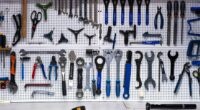Small lifestyle adjustments compound into substantial financial savings without requiring dramatic sacrifices or major life changes. Financial research from Northwestern University shows that households implementing five or more minor lifestyle swaps save an average of $3,847 annually while often improving their quality of life, health, and environmental impact simultaneously.
1. Food and Dining Expense Optimization
1.1 Home Cooking vs Restaurant Frequency
Cooking at home just two additional nights per week saves the average household $2,340 annually compared to dining out or ordering takeout. Home-cooked meals cost approximately $4 per serving versus $13-18 for restaurant meals, while providing better nutritional control and portion management.
1.2 Strategic Meal Planning and Prep
Planning meals weekly and batch-cooking staples reduces food waste by 40% and eliminates impulse grocery purchases that inflate monthly food budgets. Meal prep also prevents costly last-minute food decisions and reduces reliance on expensive convenience foods.
1.3 Generic Brand Substitution
Choosing store brands over name brands for staple items saves 25-30% on grocery bills without noticeable quality differences in most categories. Annual savings from this simple swap average $600-800 for typical households without changing eating habits or preferences.
1.4 Coffee and Beverage Cost Reduction
Brewing coffee at home instead of purchasing daily coffee shop drinks saves $1,200-1,800 annually for regular coffee drinkers. A quality home brewing setup pays for itself within weeks while providing better consistency and customization options.
2. Transportation Cost Elimination Strategies
2.1 Active Transportation Integration
Biking, walking, or using public transit for local errands and short commutes reduces vehicle expenses including gas, parking, maintenance, and insurance costs. Households using alternative transportation for 30% of trips save an average of $1,400 annually.
2.2 Vehicle Maintenance Optimization
Learning basic car maintenance tasks like oil changes, tire rotations, and filter replacements saves $800-1,200 annually while extending vehicle lifespan. These skills also prevent costly emergency repairs caused by neglected routine maintenance.
2.3 Gas Station and Fuel Efficiency Tactics
Using gas price apps, shopping at warehouse club stations, and maintaining proper tire pressure improves fuel efficiency by 10-15% and reduces annual fuel costs by $300-500. These habits require minimal effort but provide consistent savings.
2.4 Car Sharing and Ride Optimization
Coordinating errands into single trips, carpooling for regular activities, and using car-sharing services for occasional needs reduces total vehicle expenses while potentially eliminating the need for second vehicles in multi-car households.
3. Subscription and Service Audit Benefits
3.1 Streaming Service Consolidation
Rotating between streaming services instead of maintaining multiple simultaneous subscriptions saves $300-600 annually while often reducing screen time and increasing content appreciation. Most households only actively use 1-2 services at any given time.
3.2 Membership and Subscription Review
Auditing recurring subscriptions quarterly identifies forgotten or underutilized services that drain budgets automatically. The average household saves $480 annually by canceling unused gym memberships, app subscriptions, and service plans.
3.3 Utility Plan Optimization
Reviewing electricity, internet, and phone plans annually and switching to more suitable options saves $200-400 per year. Many households overpay for services they don’t fully utilize or could obtain more affordably elsewhere.
3.4 Insurance Premium Shopping
Comparing auto, home, and health insurance rates annually and adjusting coverage levels appropriately saves $600-1,200 per year while often providing better coverage options. Insurance markets change frequently, creating regular savings opportunities.
4. Energy Consumption and Utility Savings
4.1 Thermostat and Temperature Management
Adjusting thermostats by 3-5 degrees and using programmable settings reduces heating and cooling costs by 15-25%, saving $300-800 annually depending on climate and home size. These changes often go unnoticed in daily comfort levels.
4.2 LED Lighting and Efficient Appliance Use
Replacing incandescent bulbs with LEDs and using energy-efficient appliance settings reduces electricity costs by $150-300 annually while providing better lighting quality and longer bulb life. The initial investment pays for itself within months.
4.3 Water Conservation Techniques
Installing low-flow showerheads, fixing leaks promptly, and optimizing water heater settings reduces utility bills by $200-400 annually while supporting environmental conservation. Many water-saving devices improve functionality while reducing consumption.
4.4 Smart Power Strip and Phantom Load Elimination
Using smart power strips to eliminate phantom electrical loads from electronics in standby mode reduces electricity costs by $100-200 annually. This passive savings requires no behavioral changes once implemented.
5. Shopping and Consumer Spending Optimization
5.1 Strategic Timing and Sales Cycles
Shopping seasonal sales, using price-tracking apps, and timing major purchases around promotional cycles saves 20-40% on clothing, electronics, and household items. Understanding retail cycles maximizes purchasing power without changing consumption patterns.
5.2 Quality vs Quantity Investment Strategy
Purchasing higher-quality items that last longer reduces replacement costs and total ownership expenses over time. Investing in durable goods saves money long-term while reducing shopping frequency and decision fatigue.
5.3 Second-Hand and Consignment Shopping
Buying gently used items for non-essential purchases saves 50-80% compared to retail prices while often providing unique options unavailable in traditional stores. Resale shopping also supports environmental sustainability goals.
5.4 Bulk Purchasing and Group Buying
Coordinating bulk purchases with friends or family members for non-perishable items reduces per-unit costs by 15-30% while maintaining reasonable storage requirements. Warehouse club memberships pay for themselves through strategic bulk buying.
6. Entertainment and Recreation Cost Management
6.1 Free and Low-Cost Activity Substitution
Replacing expensive entertainment with free community events, hiking, libraries, and home-based activities maintains social engagement while reducing monthly entertainment expenses by $200-400. Many free activities provide better experiences than costly alternatives.
6.2 Home Entertainment Investment
Creating appealing home entertainment spaces encourages staying in rather than going out, reducing restaurant, bar, and activity costs while improving family time and social connections. Initial setup costs pay for themselves quickly through reduced external spending.
6.3 Community Resource Utilization
Using libraries, community centers, public parks, and free local events provides entertainment, education, and social opportunities without ongoing costs. These resources often offer higher-quality experiences than commercial alternatives.
6.4 Seasonal and Holiday Spending Strategy
Planning holiday and gift expenses year-round, shopping sales throughout the year, and focusing on experiences over material gifts reduces seasonal financial stress while often providing more meaningful celebrations.
7. Health and Wellness Investment Prioritization
7.1 Prevention vs Treatment Cost Analysis
Investing in preventive health measures like regular exercise, quality nutrition, and stress management prevents costly medical expenses while improving life quality. Preventive care typically provides 3-7x return on investment through avoided medical costs.
7.2 DIY Health and Beauty Solutions
Learning basic health and beauty maintenance skills—haircuts, skincare, basic fitness routines—saves $1,200-2,000 annually while often providing better results through consistent, personalized care.
7.3 Generic Medication and Healthcare Shopping
Using generic medications, comparing healthcare provider costs, and utilizing urgent care instead of emergency rooms for appropriate situations saves significant medical expenses while maintaining quality care.
7.4 Mental Health and Stress Reduction Investment
Investing in stress reduction through free or low-cost methods—meditation, exercise, social connection—prevents costly stress-related health problems while improving life satisfaction and work performance.
Conclusion
Small lifestyle swaps create substantial financial savings through compound effects that build over time without requiring dramatic life changes or significant sacrifices. The most successful approach combines multiple small changes that align with your values and lifestyle preferences, creating sustainable habits that support both financial goals and improved quality of life. Start with 2-3 swaps that feel most manageable and natural to your current routine, then gradually add additional changes as these become automatic habits. The key is consistency over perfection—small changes maintained over time create far more impact than dramatic changes that aren’t sustainable long-term.












